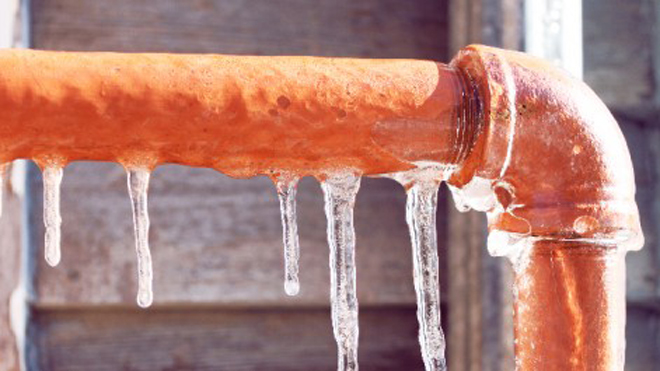Prevent Frozen Pipes in Winter: Pro Tips
Prevent Frozen Pipes in Winter: Pro Tips
Blog Article
Just about every person may have their own individual rationale with regards to How To Avoid Freezing Pipes.

Cold weather can wreak havoc on your pipes, particularly by freezing pipelines. Right here's just how to avoid it from happening and what to do if it does.
Intro
As temperature levels decrease, the danger of icy pipes increases, potentially resulting in pricey repairs and water damages. Recognizing just how to stop icy pipelines is important for homeowners in cool climates.
Comprehending Icy Pipelines
What causes pipes to ice up?
Pipes ice up when subjected to temperatures below 32 ° F (0 ° C) for extended durations. As water inside the pipelines ices up, it broadens, taxing the pipeline walls and possibly creating them to break.
Risks and problems
Icy pipelines can result in water disturbances, building damages, and expensive repair work. Ruptured pipes can flooding homes and cause substantial architectural damages.
Indicators of Frozen Piping
Recognizing frozen pipes early can avoid them from breaking.
Just how to recognize frozen pipes
Search for lowered water flow from taps, unusual odors or sounds from pipes, and visible frost on exposed pipelines.
Prevention Tips
Protecting susceptible pipelines
Wrap pipelines in insulation sleeves or use warmth tape to safeguard them from freezing temperatures. Focus on pipes in unheated or external locations of the home.
Heating strategies
Maintain interior spaces adequately warmed, particularly areas with pipes. Open cabinet doors to enable warm air to distribute around pipelines under sinks.
Securing Outside Plumbing
Yard pipes and exterior faucets
Detach and drain pipes yard hoses before winter months. Install frost-proof spigots or cover exterior taps with insulated caps.
What to Do If Your Pipes Freeze
Immediate actions to take
If you believe frozen pipes, keep faucets available to eliminate stress as the ice thaws. Make use of a hairdryer or towels taken in hot water to thaw pipes slowly.
Long-Term Solutions
Structural adjustments
Consider rerouting pipes away from exterior wall surfaces or unheated locations. Add extra insulation to attic rooms, basements, and crawl spaces.
Upgrading insulation
Invest in high-quality insulation for pipes, attics, and wall surfaces. Appropriate insulation aids preserve constant temperatures and reduces the danger of frozen pipes.
Conclusion
Stopping frozen pipelines needs positive steps and fast responses. By understanding the reasons, signs, and safety nets, home owners can secure their plumbing during winter.
5 Ways to Prevent Frozen Pipes
Drain Outdoor Faucets and Disconnect Hoses
First, close the shut-off valve that controls the flow of water in the pipe to your outdoor faucet. Then, head outside to disconnect and drain your hose and open the outdoor faucet to allow the water to completely drain out of the line. Turn off the faucet when done. Finally, head back to the shut-off valve and drain the remaining water inside the pipe into a bucket or container. Additionally, if you have a home irrigation system, you should consider hiring an expert to clear the system of water each year.
Insulate Pipes
One of the best and most cost-effective methods for preventing frozen water pipes is to wrap your pipes with insulation. This is especially important for areas in your home that aren’t exposed to heat, such as an attic. We suggest using foam sleeves, which can typically be found at your local hardware store.
Keep Heat Running at 65
Your pipes are located inside your walls, and the temperature there is much colder than the rest of the house. To prevent your pipes from freezing, The Insurance Information Institute suggests that you keep your home heated to at least 65 degrees, even when traveling. You may want to invest in smart devices that can keep an eye on the temperature in your home while you’re away.
Leave Water Dripping
Moving water — even a small trickle — can prevent ice from forming inside your pipes. When freezing temps are imminent, start a drip of water from all faucets that serve exposed pipes. Leaving a few faucets running will also help relieve pressure inside the pipes and help prevent a rupture if the water inside freezes.
Open Cupboard Doors
Warm your kitchen and bathroom pipes by opening cupboards and vanities. You should also leave your interior doors ajar to help warm air circulate evenly throughout your home.

I am very fascinated by Prevent Frozen Pipes and I hope you enjoyed reading our article. Sharing is caring. Helping people is fun. I truly appreciate reading our article about How to prepare your home plumbing for winter weather.
Schedule Now! Report this page